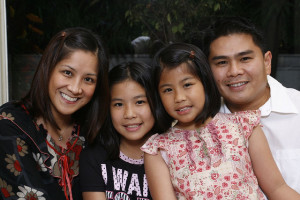Guidelines for Healthy Lifestyles for Learning and Mental Health

Photo Credit: Jepoycamboy
These guidelines are a set of common-sense ideas that are truly helpful to children with attentional, learning and behavioral/emotional difficulties. They are part of a lifelong set of habits that help to manage stress, sustain energy for attention and effort to non-preferred tasks, enhance learning, reduce frustration, and improve self esteem.
The key to these simple ideas is to practice them regularly. They may be helpful when used in response to stress or difficulties. Regular practice serves to eliminate and reduce many of the ups and downs that befuddle children with attention, learning and social/emotional difficulties.
We encourage parents to consider how to make some of these activities into family habits. Make them a routine that describes something about your family. Just as some families are “soccer,” “theater,” “skiing,” “boating,” “church,” or “camping” families, where they share a common activity and practice that activity on a regular basis, you can incorporate these activities into a regular habit for all family members.
Do not just practice these activities for your kids! Do them for yourself. They will help you to manage stress, focus and be happier. In addition, your children are more likely to make them a part of their own lifestyle if they see that you’re doing the same techniques that you’re telling your child to practice. If they see that exercise is as regular as brushing your teeth (we’re assuming you do that at least daily) in your home, they will easily pick up on incorporating exercise into their daily routine.
These guidelines are divided into five sections: Exercise, Enjoy Nature, Think Positive, Sleep Well, and Being Social.
Exercise
Exercise on most days. Routines like going for a morning or evening walk are easy and can be done daily. Swimming, biking, running, or playing a sport are great, but often are dependent on weather, availability of equipment or other people. Indoor activities such as yoga, weight lifting, calisthenics, martial arts, stretching, riding an exercise bike, or running on a treadmill are easy to do at home and on a daily basis. Another idea would be to have you and your child join a gym, with regularly scheduled times to go; kids often do their homework more efficiently after exercise, so perhaps schedule a time after school, before your child sits down to do their homework. Broaden the concept of exercise so it includes dance lessons, working in the garden, or a movement based game on the Nintendo Wii console, to help make it more regular. The key: make exercise a part of every day!
Enrolling your child in organized sports and other physical activities gives them healthy outlets for their pent up energy. Choose a sport that your child will enjoy and that suits their strengths. Sports such as baseball or football that involve a lot of “down time” are not the best fit for children with attention problems. Instead choose individual or team sports like basketball, hockey, or swimming, that require constant motion so your child will not lose focus during gameplay. Children who are easily frustrated by competition may benefit from martial arts or yoga, which offer structure and some social interaction without the stigma of winners and losers.
Books
Ratey, John J., M.D. with Eric Hagerman. (2008). Spark: The Revolutionary New Science of Eercise and the Brain. New York, NY: Little, Brown and Company.
Websites
Attitudemag.com (Describes the benefits of exercise for ADHD kids)
Mayoclinic.com (Describes how and why exercise reduces stress)
Going Out in Nature
A study conducted by the University of Illinois at Urbana-Champaign has shown that children with ADD/ADHD benefit from spending time in nature. Taking a walk or playing in a park with grass and trees reduced symptoms more than playing on a concrete playground or walking around a city. Studies have been strong enough to suggest that spending time outdoors might even be a substitute for medication in some children. Any natural setting, even just a tree-lined street, is enough for these effects to take place.
Try to take a walk around a nearby park, or even around the backyard, once a day. For example, taking a walk after your child gets home from school, before they begin their homework, will help them focus better while they work.
Other ideas for spending time in nature include gardening, sports, walking the dog, etc. Field sports, such as soccer, baseball and softball will help your child want to spend time outside by keeping their attention focused. If your child is less competitive, activities such as frisbee, biking, and bird-watching also help your child sustain their attention and spend time outside.
If the weather isn’t cooperating, encourage your child to splash around in puddles during the rain, build a snowman while it’s snowing, or fly a kite when it’s windy.
Books
Louv, Richard. (2005). Last Child in the Woods: Saving Our Children from Nature-Deficit Disorder. Chapel Hill, NC: Algonquin Books of Chapel Hill.
White, Linda. (2000). Trekking on a Trail (Activities for Kids). Layton, Utah: Gibbs Smith. Includes tips for planning hiking excursions and activities for while you’re hiking. Recommended for ages 4-8.
Bradley, Care. (1999). Outdoor Activities for Kids: Over 100 Fun, Practical Things To Do Outside. London, England: Lorenz Books. A list of activities for children to do outside. Recommended for ages 4-8.
Websites
Nation Wildlife Foundation (Discusses the health benefits of children being out in nature)
Positive Thinking

Photo Credit: Jackie Finn-Irwin
Optimism isn’t just the difference between a glass half full and a glass half empty. It’s the difference between stress and stress reduction, and even between the sniffles and a resistance to the common cold. Drastic changes are not necessary for these benefits; working on small aspects will be easier to tackle and improvement will be seen more quickly.
Try helping your child practice some of these:
- Take some time during the day to consider your thoughts, and if you find they are mostly negative, put a quick, positive spin on them. If your child is negative about not completing some tasks that day, spin it around and encourage them to think about the tasks they have accomplished and their success in those areas.
- Laughing. It doesn’t sound like a lot, but laughing and smiling during the day can help reduce stress and help maintain a positive outlook.
- Exercising and a healthy diet can reduce stress and seeing a positive change in physical health will help keep you optimistic. Laughing and playing is important for children.
- One negative person can bring down the mood of an entire crowd of people, so focus on spending time with people who are positive and supportive. People who are cynical and think negatively can increase your stress level and influence your own thinking as well.
- Encourage your child to practice positive self-talk by not saying anything to themselves that they wouldn’t say to someone else. Teach this when you help them learn social etiquette skills.
Books
Huebner, Dawn. (2006). What to Do When You Grumble Too Much: A Kid’s Guide to Overcoming Negativity. Washington, DC: Magination Press. (Helps children and parents develop behavioral and cognitive techniques to treat negative thinking. Recommended for children ages 9-12.)
Websites
MayoClinic.com (Tips for stress reduction and how to think positive.)
Sleep Well
A good night’s sleep can boost a person’s mood, ability to focus, and energy level. Most studies recommend at least seven hours of sleep a night for optimum rest. Even if you plan enough time for a full seven hours, you may not be getting the most of it. Diet and exercise are key factors in achieving successful rest.
Children with ADHD need just as much (if not more) sleep as their peers, but often have trouble achieving it because of over-stimulation and other attentional problems. Diet and exercise are also key factors in achieving a successful rest, but you can improve sleep by keeping a consistent, early bedtime and using several other strategies.
These strategies might include:
- Reducing or even eliminating caffeine from your child’s diet. Soda beverages and chocolate can contain significant amounts of caffeine. Studies recommend that adults stick to non-caffeinated beverages after 4 p.m. so that their bodies may naturally wind down before bed. You may want to make this switch for your children even earlier depending on bedtimes.
- Turning off the television an hour or more before bedtime. Keeping them away from the television during the day and increasing the amount of time they spend playing and exercising will also help them fall asleep faster and sleep more soundly.
- Quieter activities such as reading and coloring before bed to help your child wind down.
- Scents such as lavender may help calm your child down. Place potpourri or a reed diffuser with a calming scent in your child’s room. Avoid candles, incense, or anything else that is lit.
- Children with ADHD often find “white noise” to be calming. Use relaxation tapes like nature sounds or calming music at bedtime. Other options include running an electric fan in their room or tuning a radio to static. You can also find smart-phone apps that have a variety of different noises to help soothe the mind into sleep, such as Sleep Pillow.
Books
Kurcinka, Mary Sheedy. (2006). Sleepless in America: Is Your Child Misbehaving or Missing Sleep? New York, NY: HarperCollins.
Websites
SleepWellBaby.com (Sells white noise machines, aromatic sprays, etc., and has articles on sleep disorders, patterns and sleep schedules.)
Do Things With People (Being Social)
Children with attentional and behavioral difficulties often have problems socializing with peers because they have a hard time learning social skills and rules, reacting appropriately, and reading other faces and body language. Work with your child to overcome their difficulties by using some of the following techniques:
- Speak gently but honestly with your child about their challenges with socializing and how to make changes.
- Go through a magazine and point out pictures of people with different facial expressions. Use sticky notes to label each picture with the person’s possible emotions or feelings based on how they look.
- Play charades and have you and your child act out different emotions and try to get the other to guess correctly.
- Role-play various social scenarios with your child. Trade roles often and try to make it fun.
It is important for your child to participate in social activities like sports, dance, karate, etc. Even activities such as playing at recess with other children or at the park after school can be beneficial. Some children may find it easier to start off in small groups. With that in mind, follow these basic strategies:
- Be careful to select playmates for your child with similar language and physical skills.
- Invite only one or two friends at a time at first. Watch them closely while they play.
- Have a zero tolerance policy for hitting, pushing and yelling in your house or yard.
- Make time and space for your child to play, and reward good play behaviors often.
Books
Parker, Harvey C. (2001). Problem Solver Guide for Students with ADHD. North Branch, MN: Specialty Press. Ideas for study habits, socialization, and written language skills.
Taylor, John F., Ph.D. (2006). The Survival Guide for Kids with ADD or ADHD. Minneapolis, MN: Free Spirit Publishing, Inc. An excellent resource for children with ADD or ADHD. Recommended for children 6 to 12 years old.
Websites
AdditudeMag.com (17 ways parents can help children make friends.)